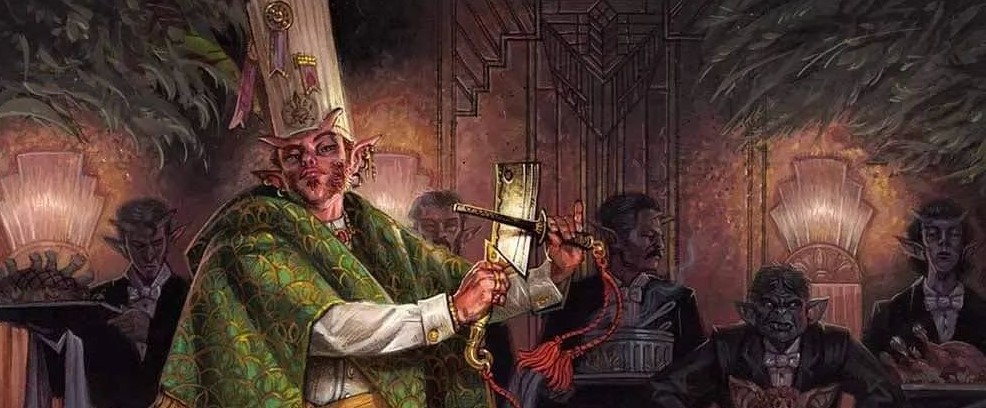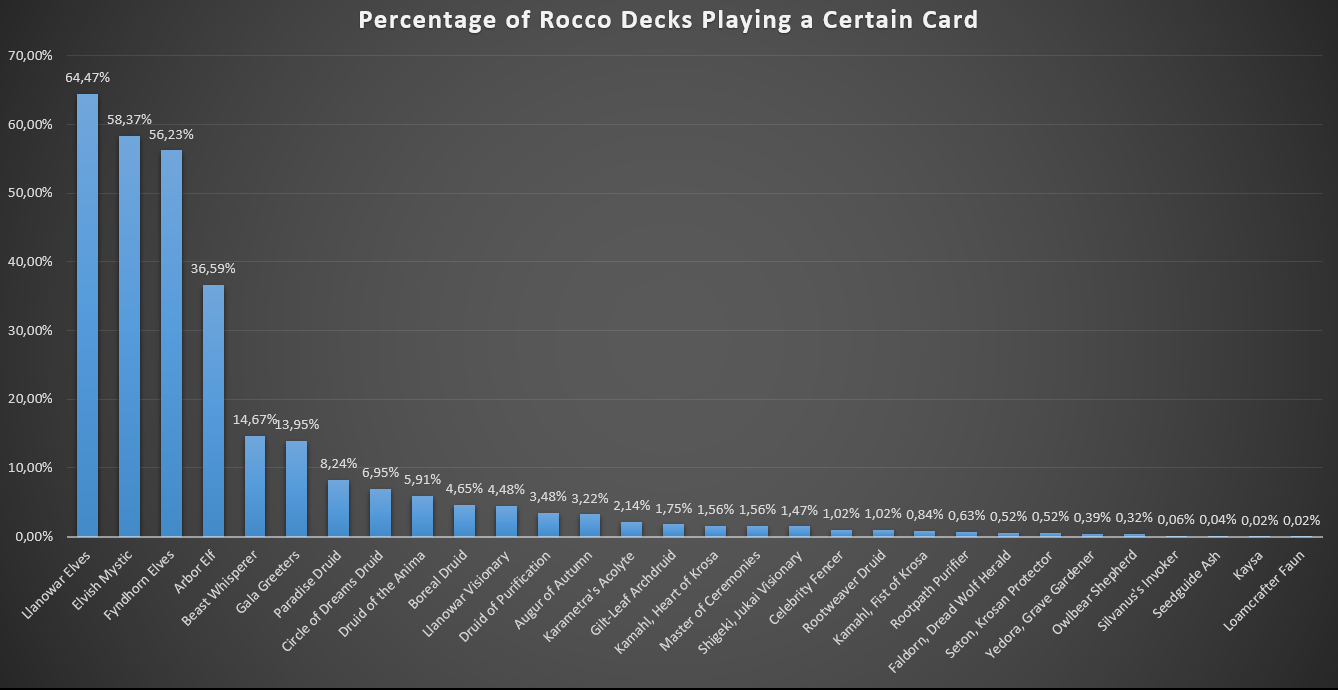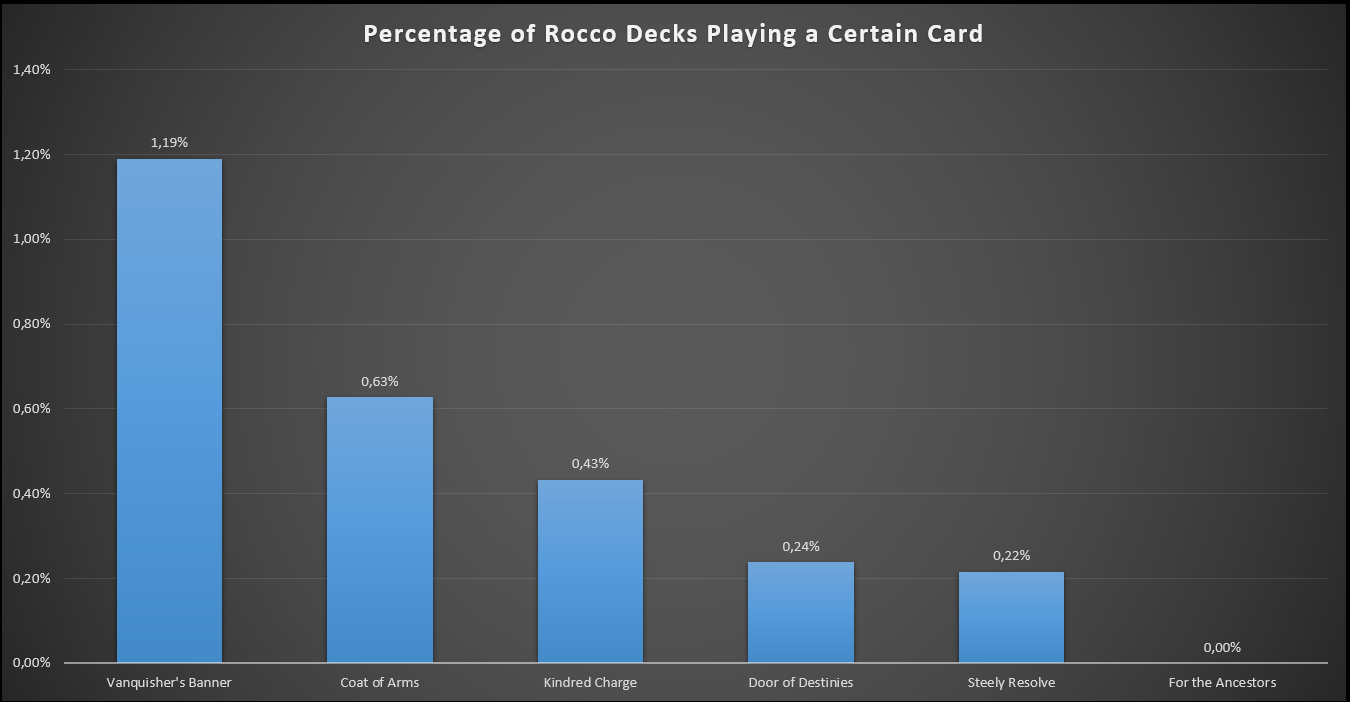(Rocco, Cabaretti CatererRocco, Cabaretti Caterer | Art by Chris Seaman)
Could You Land Them to Me, Please?
Hello, everyone, and welcome back to Recross the Paths, the series that gives commanders a typal twist.
Today I'm going to talk about a world-renowned chef and his latest trip: I'm rereferring to Rocco, Cabaretti CatererRocco, Cabaretti Caterer and his voyage to Ireland, where he learnt about Druids. Hence, let's see what these new sous chef have been cooking for us.
Stage One: The Deck
Step One: The Kitchen Brigade
One thing Druids excel at is producing mana: Elvish MysticElvish Mystic, Fyndhorn ElvesFyndhorn Elves and Llanowar ElvesLlanowar Elves can give us some green, Circle of Dreams DruidCircle of Dreams Druid rewards us for playing multiple creatures, and Druid of the AnimaDruid of the Anima and Paradise DruidParadise Druid make sure we get access to all the colors we need.
But we also know that a good brigade is always expanding and adding new people to improve the team. For this reason we also run Beast WhispererBeast Whisperer to make sure we're always get something out of our creatures, as well as Augur of AutumnAugur of Autumn and Owlbear ShepherdOwlbear Shepherd to ensure we keep producing value. Also, Faldorn, Dread Wolf HeraldFaldorn, Dread Wolf Herald is a nice way to transform dead draws in potentially powerful spells and produce some bodies.
All in all, we also need to serve the dessert and end our meal on a sweet note. We have three executive chefs, with Celebrity FencerCelebrity Fencer as an expert in one course meals that can easily satiate one or more of our opponents, and Kamahl, Fist of KrosaKamahl, Fist of Krosa and Kamahl, Heart of KrosaKamahl, Heart of Krosa taking turns as the leading figures serving an exquisite final dish.
Step Two: the Working Environment
RoccoRocco's standards as an employer are very high, but he also offers a lot of bonuses to those who work with him. First of all, he offers an extremely fertile working environment, where no idea goes to waste and everything is allowed to express its full potential. Hence why Noxious RevivalNoxious Revival, Wildest DreamsWildest Dreams and RegrowthRegrowth are in, as they allow us to get back those elements that served us well in the past. All-new ideas and possibilities are welcome as well, of which Lifecrafter's BestiaryLifecrafter's Bestiary, Guardian ProjectGuardian Project and CamaraderieCamaraderie are perfect examples.
Another essential feature of a positive work environment is feeling welcome and protected. Steely ResolveSteely Resolve, Door of DestiniesDoor of Destinies and Coat of ArmsCoat of Arms are all here to empower this Druid brigade and help them push further. And They Shall Know No FearAnd They Shall Know No Fear, Heroic InterventionHeroic Intervention and Cosmic InterventionCosmic Intervention are all methods to take care of your Druids if they run into some problems or dangers.
Step Three: Spite, the Secret Ingredient
As of now, you might be thinking: What exactly do we need RoccoRocco for? And the truth is actually pretty diabolical. As it turns out, he's a true master of theft, with Gilt-Leaf ArchdruidGilt-Leaf Archdruid being his premier partner in crime to easily call and help him whenever he arrives on the battlefield. Hence, the true aim of this brigade is to steal others' ingredients and use them to claim victory. This can be achieved in multiple ways, such as raising an Helix PinnacleHelix Pinnacle to the sky or the good old explosive potential of a FireballFireball. As the last nail in the coffin, we can use Territorial DisputeTerritorial Dispute to make sure no other restaurant is ever opening nearby (perhaps for quite a long time).
Step Four: The Complete Decklist
Rocco Druids
View on ArchidektCommander (1)
- 1 Rocco, Cabaretti CatererRocco, Cabaretti Caterer
Druids (29)
- 1 Arbor ElfArbor Elf
- 1 Augur of AutumnAugur of Autumn
- 1 Beast WhispererBeast Whisperer
- 1 Boreal DruidBoreal Druid
- 1 Celebrity FencerCelebrity Fencer
- 1 Circle of Dreams DruidCircle of Dreams Druid
- 1 Druid of PurificationDruid of Purification
- 1 Druid of the AnimaDruid of the Anima
- 1 Elvish MysticElvish Mystic
- 1 Faldorn, Dread Wolf HeraldFaldorn, Dread Wolf Herald
- 1 Fyndhorn ElvesFyndhorn Elves
- 1 Gala GreetersGala Greeters
- 1 Kamahl, Fist of KrosaKamahl, Fist of Krosa
- 1 Kamahl, Heart of KrosaKamahl, Heart of Krosa
- 1 Karametra's AcolyteKarametra's Acolyte
- 1 KaysaKaysa
- 1 Llanowar ElvesLlanowar Elves
- 1 Llanowar VisionaryLlanowar Visionary
- 1 Loamcrafter FaunLoamcrafter Faun
- 1 Master of CeremoniesMaster of Ceremonies
- 1 Owlbear ShepherdOwlbear Shepherd
- 1 Paradise DruidParadise Druid
- 1 Rootpath PurifierRootpath Purifier
- 1 Rootweaver DruidRootweaver Druid
- 1 Seedguide AshSeedguide Ash
- 1 Seton, Krosan ProtectorSeton, Krosan Protector
- 1 Shigeki, Jukai VisionaryShigeki, Jukai Visionary
- 1 Silvanus's InvokerSilvanus's Invoker
- 1 Yedora, Grave GardenerYedora, Grave Gardener
Card Draw (6)
- 1 CamaraderieCamaraderie
- 1 Guardian ProjectGuardian Project
- 1 Lifecrafter's BestiaryLifecrafter's Bestiary
- 1 Noxious RevivalNoxious Revival
- 1 RegrowthRegrowth
- 1 Wildest DreamsWildest Dreams
Typal Synergy (7)
- 1 Coat of ArmsCoat of Arms
- 1 Door of DestiniesDoor of Destinies
- 1 For the AncestorsFor the Ancestors
- 1 Kindred ChargeKindred Charge
- 1 Leyline of AbundanceLeyline of Abundance
- 1 Steely ResolveSteely Resolve
- 1 Vanquisher's BannerVanquisher's Banner
Protection (4)
- 1 And They Shall Know No FearAnd They Shall Know No Fear
- 1 Cosmic InterventionCosmic Intervention
- 1 Heroic InterventionHeroic Intervention
- 1 Teferi's ProtectionTeferi's Protection
WinCons (8)
- 1 Comet StormComet Storm
- 1 Crackle with PowerCrackle with Power
- 1 Defense of the HeartDefense of the Heart
- 1 Devastating SummonsDevastating Summons
- 1 FireballFireball
- 1 Gilt-Leaf ArchdruidGilt-Leaf Archdruid
- 1 Helix PinnacleHelix Pinnacle
- 1 Territorial DisputeTerritorial Dispute
Ramp (9)
- 1 Arcane SignetArcane Signet
- 1 Chromatic LanternChromatic Lantern
- 1 CultivateCultivate
- 1 FarseekFarseek
- 1 Kodama's ReachKodama's Reach
- 1 Nature's LoreNature's Lore
- 1 Rampant GrowthRampant Growth
- 1 Sol RingSol Ring
- 1 Three VisitsThree Visits
Lands (36)
- 1 Boros GarrisonBoros Garrison
- 1 Bountiful PromenadeBountiful Promenade
- 1 Canopy VistaCanopy Vista
- 1 Cinder GladeCinder Glade
- 1 Command TowerCommand Tower
- 13 ForestForest
- 1 Gruul TurfGruul Turf
- 1 Jetmir's GardenJetmir's Garden
- 1 Jungle ShrineJungle Shrine
- 1 Kessig Wolf RunKessig Wolf Run
- 1 Krosan VergeKrosan Verge
- 2 MountainMountain
- 1 Oran-Rief, the VastwoodOran-Rief, the Vastwood
- 1 Path of AncestryPath of Ancestry
- 1 PlainsPlains
- 1 Sacred FoundrySacred Foundry
- 1 Secluded CourtyardSecluded Courtyard
- 1 Selesnya SanctuarySelesnya Sanctuary
- 1 Spectator SeatingSpectator Seating
- 1 Spire GardenSpire Garden
- 1 Stomping GroundStomping Ground
- 1 Temple GardenTemple Garden
- 1 Unclaimed TerritoryUnclaimed Territory
Stage Two: The Dataroom
We’re now on to the last part of this deck tech: the data room. Was this deck idea actually unique? Let's compare the list against both the average RoccoRocco deck and the average Druid deck to see what we gained (and lost) in the process.
Step One: The Average RoccoRocco Deck
Our plotting head chef is a pretty popular, ranking 6th among other Naya commanders and 173rd overall, with 4,622 decks under its name. All in all, it is interesting to know how many of them feature Druid creatures.
The graph tells us a harsh truth: Druids aren't played with this commander, as the only ones that are often included are the most popular mana dorks (i.e., cheap creatures that produce mana) in the format. Llanowar ElvesLlanowar Elves, Elvish MysticElvish Mystic, Fyndhorn ElvesFyndhorn Elves and to a lesser extent, Arbor ElfArbor Elf are go-to staples that are present in the vast majority of green decks. To further prove this, we can see how Seton, Krosan ProtectorSeton, Krosan Protector and Gilt-Leaf ArchdruidGilt-Leaf Archdruid (which are the only creatures explicitly referring to Druids in their textboxes among these) are included in less than 2% of the decks.
Next, I wanted to see if, in general, typal strategies are something people associate with this commander.
The numbers here are even clearer: among the cards we run, including staples such as Vanquisher's BannerVanquisher's Banner, only one of them barely surpasses the 1% mark. This tells us how basically no one is interested in this type of gameplan with this commander, as the Chord of CallingChord of Calling-like effect better suites combo decks, like the one showcased today, rather than generic creature-based ones.
Step Two: the Average Druids Deck
Druids aren't really a popular creature type, as the most played commander for this strategy is SetonSeton, with just 834 decks registered on EDHREC. Let's see how popular our cooks are in this environment.
Once again, the numbers are extremely clear: the majority of the creatures see relevant play, with 14 out of 24 being above the 30% inclusion rate. Also, it is relevant to compare the two graphs, as cards such as Karametra's AcolyteKarametra's Acolyte skyrockets from being present in 2,14% of the RoccoRocco decks to 82,85% of SetonSeton ones.
Takeaways from Today's Article
- RoccoRocco is a very good commander for creature-based combos. Being completely honest, this whole deck wouldn't exist if it wasn't for this card. The ability to reliably and repeatedly tutor the hidden commander in this list (Gilt-Leaf ArchdruidGilt-Leaf Archdruid) is perfect and needed to take advantage of such a powerful effect.
- While I know no one likes to be left without lands, I also think the deck is overall balanced by its weaknesses. First off, almost any kind of removal straight-up stops it, as without Gilt-Leaf ArchdruidGilt-Leaf Archdruid it becomes significantly more difficult to win. It's also susceptible to board wipes, as it requires a certain number of creatures in play to be turned on, hence, it can't be carelessly slammed on the battlefield. On the other hand, it's also a combo that pretty much ends the game. The major problem people have with mass land destruction is that it usually is a reset button that stretches gametime without allowing anyone to win it. Nonetheless, in this case, once the DruidDruid has been activated, it's almost guaranteed we can get the win pretty soon.
- The absurd discrepancy in the numbers showcased in the two graphs tell us how there are not enough playable Druids: in fact, when a commander explicitly requires them, they are almost always played, whereas, in other contexts, they are barely included.
That’s all from me for the moment. I hope you enjoyed this deck tech, but now it’s on to you! What do you think of it? Would you have changed anything? Is there something you particularly liked? Most importantly, do you believe this was a true innovation? Let me know in the comments below!
Read more:
Jonathan Zucchetti
Jonathan is an Italy-based Magic enjoyer that has been playing, although with some pauses, ever since Mirrodin released. His passion for EDH bloomed in 2018 and, with it, the love for exotic and underrepresented builds. When he is not complaining about an “unfair” removal, you can find him fiercely defending his Delver of Secrets at a pauper table.
Your opinions are welcome. We love hearing what you think about Magic! We ask that you are always respectful when commenting. Please keep in mind how your comments could be interpreted by others. Personal attacks on our writers or other commenters will not be tolerated. Your comments may be removed if your language could be interpreted as aggressive or disrespectful. You may also be banned from writing further comments.



